Have you had enough of your cats dropping your gifts around the home as a surprise? Litter box training may greatly improve the pleasure of owning a cat. You only need some patience and basic advice to guide cats on using the litter box like a pro.
To ease your life as a pet owner, this article from Canvas Personalized will show you how to train a cat to use a litter box.
Before You Train a Cat to Use a Litter Box
Having the required equipment, such as multiple litter boxes, kitty litter, and so on, is critical for effective litter box training. There are a few things you’ll need to buy before you can start litter training for a furry friend:
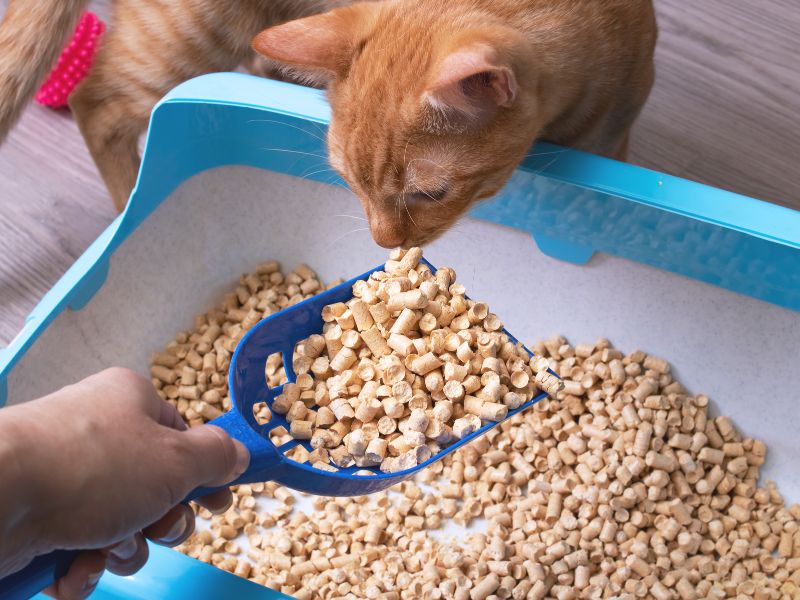
Litter box
Numerous litter boxes are available, including covered litter boxes and those designed to fit into tight corners. The size of the box you’re looking for will depend on your cat’s age, size, and weight. A good rule of thumb is to get a litter box 1.5 times as big as your cat. If you follow this “train a kitten to use a litter box” tip, your pet will be able to freely circle around and dig in many spots.
Cat litter
And it’s no different with litter; there are many options to choose from. Clumping litter sticks together when damp and is the most often used kind because of its convenience and widespread availability (creating solid waste).
Litter scoop
Lastly, a sifting litter scoop is helpful since it enables you to remove the dirt without changing the litter daily.
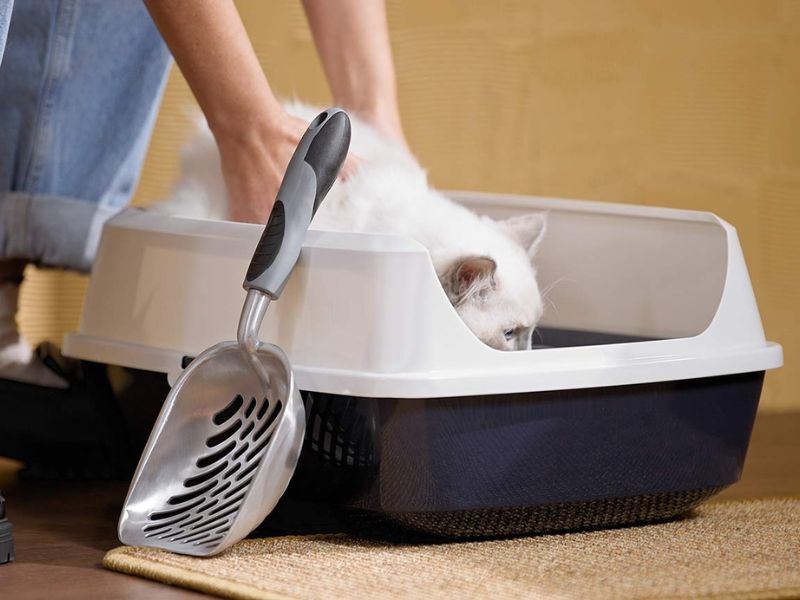
How to Train a Cat to Use a Litter Box: Step-by-step guide
Step 1: Put the box in the right location
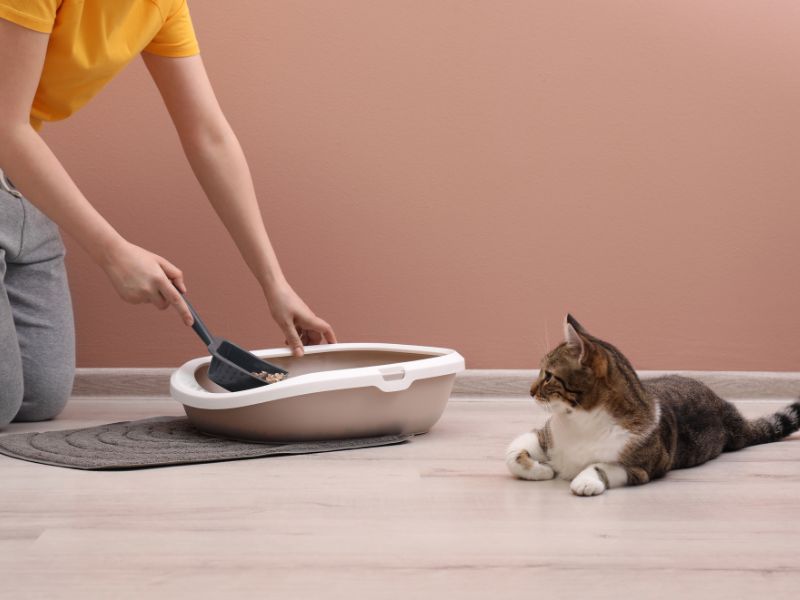
The first step on how to train a cat to use a litter box is the location. Pay attention to which locations your cat frequently visits if you’ve set multiple boxes in areas it ignores. You may try enticing them to use the litter box by placing it in the same spot in the house where they’ve been pooping.
If your cat seems to like it has to use the box, you should constantly eye on it. Kittens should be encouraged to use their litter box by being placed in or near it. It may take a few tries, but stick at it until you get it.
Step 2: Try different brands to get the right litter and tray
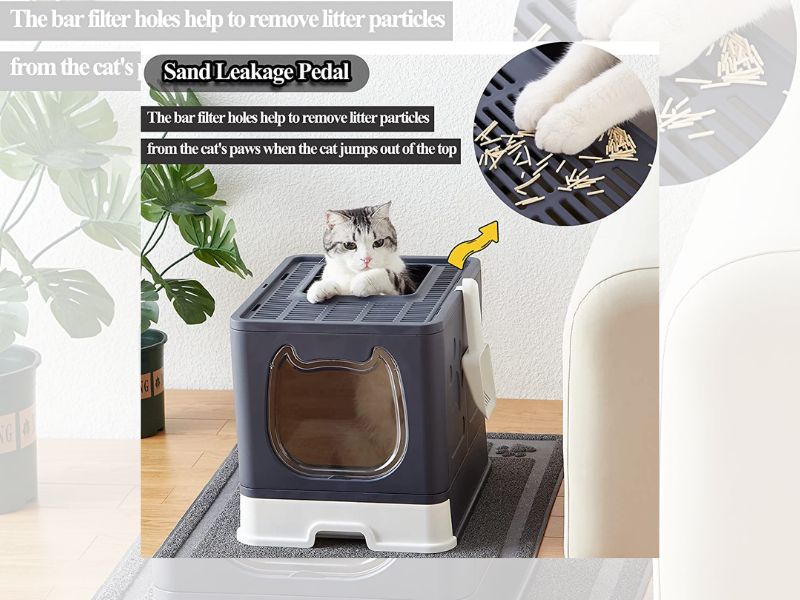
Even if you’ve relocated the litter boxes to the spot your cat typically uses as the toilet, they may still not be utilizing them. To see whether your cats has a preference, try switching different litters to train a cat to use a litter box. Most cats may avoid wetting their paws because certain litters are unpleasant to walk on, and others do not absorb urine suitably.
If they appear satisfied with the litter and digging about in it but still refuse to use the box as a toilet, you may want to try a new tray. Some felines choose the covered trays rather than the more common open ones.
Step 3: Reward good behavior on the litter train session
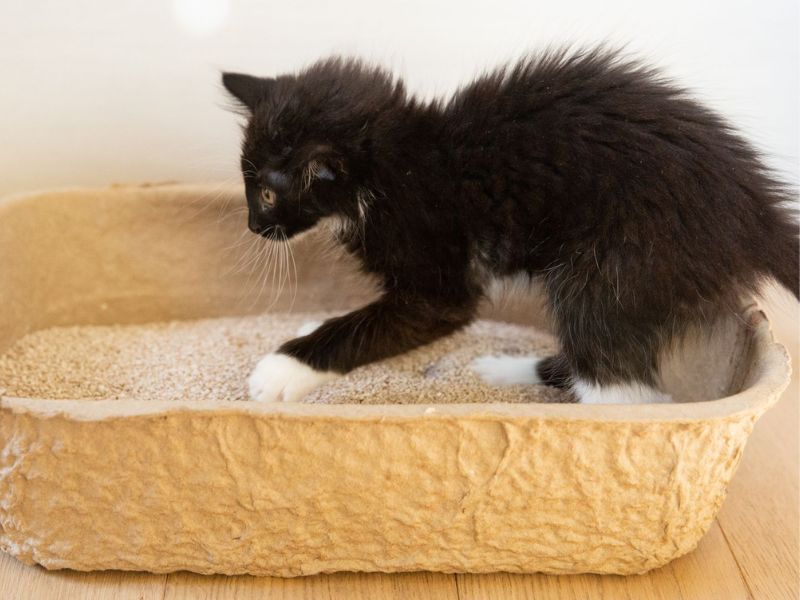
Once you have discovered where your cat prefers to use the litter box and what kind of tray they like, you’ll need to closely check them when they show signs of needing to go to the toilet. Give them a lot of cat’s food when they use the toilet in their tray so they know they did a good job.
After some time, your cats will begin using the litter box regularly. However, if your pet seems uncomfortable or hasn’t normally been toileting, you should take them to the vet as soon as possible.
Be sure to keep an eye on them and get them to the vet if you see any signs of incontinence when training a cat to use a new litter box. The necessity for quick veterinary treatment should be considered if your male cat is straining to pee.
>>> Further reading: How to Teach a Cat to Fetch in 6 Easy Steps?
Tips when Training a Cat to Use a New Litter Box
Keep Clean Litter Boxes
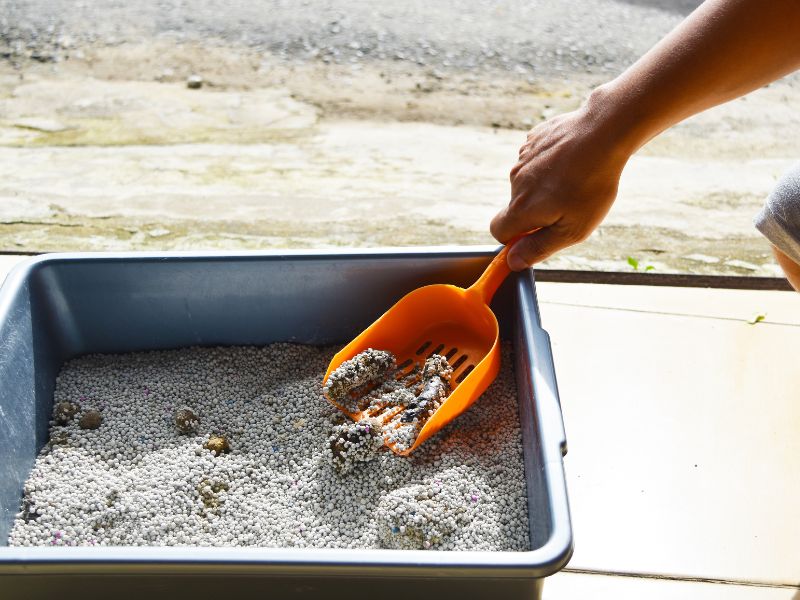
Scoop the kitty litter out of the litter box as soon as you see he has used it. You may need to add a little additional litter after you’re done to give your pet space to dig a hole and cover it up.
If you keep the litter box clean thoroughly once a week, your cats will appreciate the advantages of the litter box training. The litter box just has to be emptied into the litter, cleaned with warm water, a pet-safe wash, and then refilled with fresh litter.
Choose the Right Litter – Clumping Litter
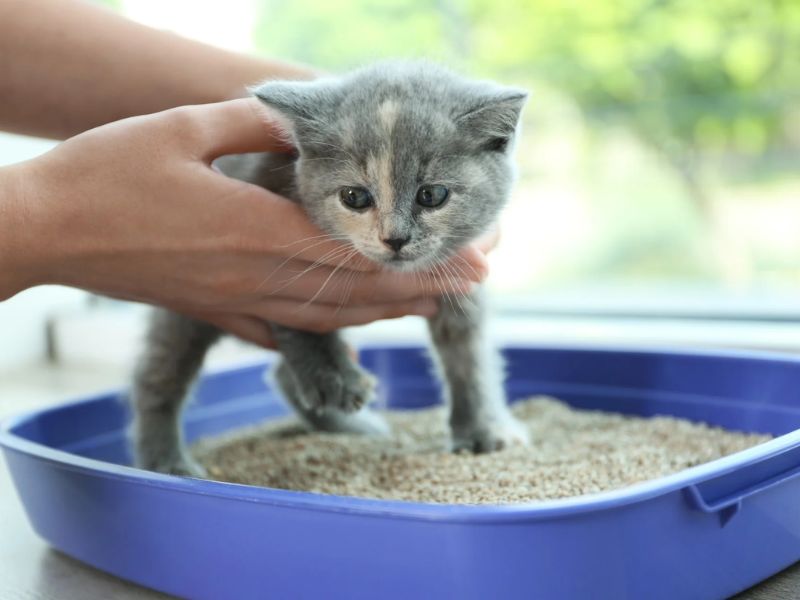
Clumping litter is preferred by many cats because it is simpler for them to hide their waste, and it is more pleasant for them to walk on. Using clumping litter will also make it simpler to collect your cat’s waste from the litter box after usage.
Some felines only use the unscented litter. If your cats have sensitive skin or allergies, the Humane Society recommends avoiding using litter containing perfume or deodorizer.
Use the Right Amount of Litter
If you use too much litter in the cat’s litter box, he may kick or spill part of it after he buries his waste.
Nevertheless, if there isn’t enough litter in the box, maybe your cat feel that he can’t bury his waste, leading him to urinate elsewhere. Moreover, if there isn’t enough litter in the litter box, it might start to smell and will be more of a hassle to clean.
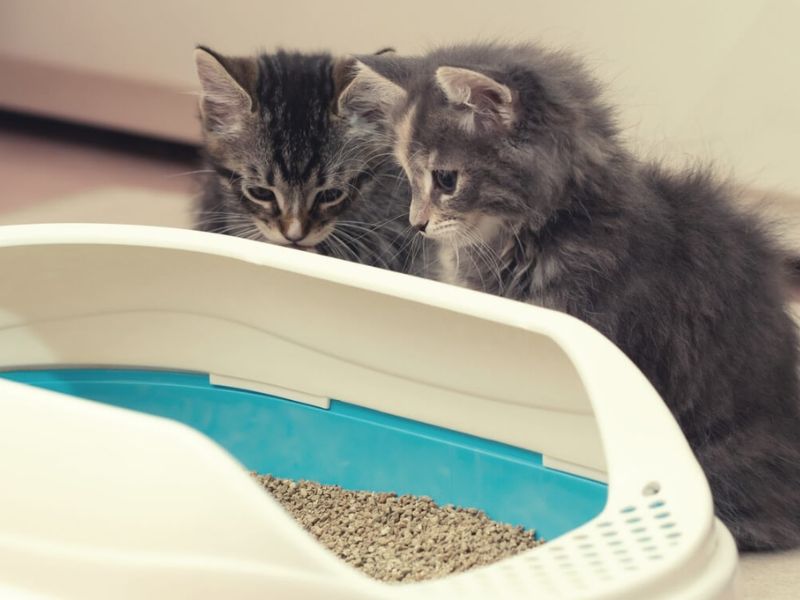
Experts advise using at least two inches (5.08 cm) of litter in the cat’s litter box. If you want to give your cat more space to dig and bury, some experts recommend giving them four inches (10.16 cm) of litter.
The recommended minimum litter depth for a cat is two inches (5.08 cm), but if your cat isn’t happy, you may increase it to four inches (10.16 cm).
Make the Litter Box Accessible
- For young kittens, a shallower, smaller box will do, but you’ll need to upgrade to the bigger box as your cat grows.
- Boxes for kittens and older cats should have low edges that allow them to easily jump over them.
- It’s best to use uncovered litter boxes. Many felines just refuse to utilize them.
Have one Litter Box for one Cat
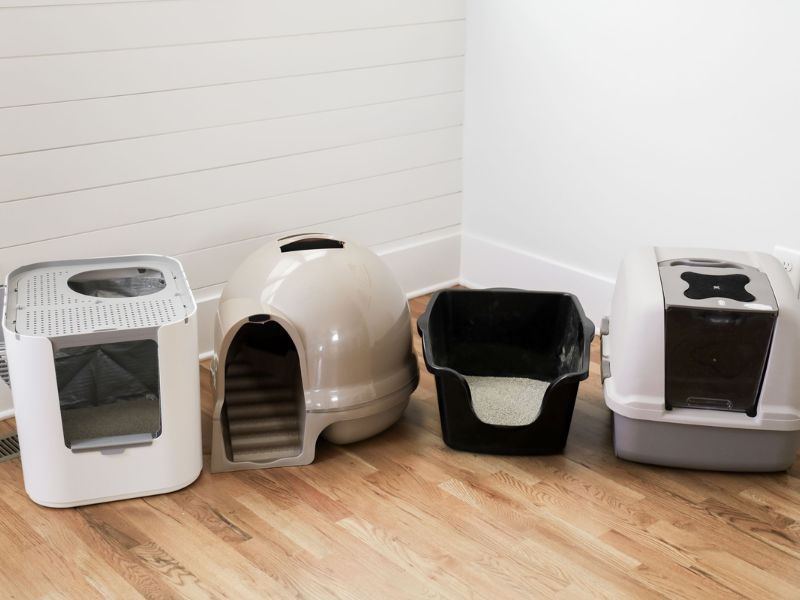
There should be two litter boxes when there is more than one cat in the home. Most cats just won’t use a litter box that’s previously been used by other cats. Thus, the bigger your house is, the more litter boxes you will need for multiple cats.
Give your Cat’s Attention
Most cats are easily stressed by any kind of change, whether it’s a major one like relocating or a little one like moving the litter box or altering cleaning products. If your cat is having trouble adapting, it could help to give him some additional attention in the way of companionship, care, and reassurance.
Rule out Illness
Seeing a vet may help rule out any underlying health concerns as a reasonable explanation. Be careful to thoroughly explain the cat behavior and request a urinalysis, stool check, and blood testing (especially if your cat is an adult cat).
Don’t Punish your Cat when Litter Training
The use of force, both physical and verbal, will only make matters worse. Litter box problems are not caused by being spiteful, as is a common misconception; rather, they are the result of stress.
Do a Test to Find which Cats Prefer
Put many litter boxes around the home, and provide a variety of materials for your cats to choose from, like newspaper, clumping litter, non-clumping litter, sand, potted plant, sawdust, carpet remnants, and no litter at all.

If your cat has been using an inappropriate surface (such as carpet) as its toilet, you may try litter training it to use the box by gradually increasing the amount of litter it is exposed to over time. You must keep adding litter to the box until the carpet remnants can be removed.
Confine when Litter Box Training
Shut the door to keep the cat out if the problem is located in just one room. Keep your cat in a small, cat-proofed area with food, water, bedding, toys, and a litter box if required. Keep him there until you know for sure he is using the litter box, and then slowly bring him to the rest of the house.
Other techniques
Many cats will not urinate or defecate in the same location as where they are fed or near the cat bed.
You may train your cat to avoid urinating in certain locations by covering them with aluminum foil, upside-down carpet runners (with plastic spikes on the bottom), or double-sided tape.
>>> Read more:
- How to Train a Cat to Come? – 7 Painless Step-by-step Guide
- How to Teach a Cat its Name in 7 Simplest Steps?
Teaching your cat to use a litter box is essential to cat ownership, but it doesn’t have to be a painful experience. You can make the training a breeze by following the “How to Train a Cat to Use a Litter Box” techniques and steps provided in this article from Canvas Personalized.
Remember to be patient and consistent, and use positive reinforcement, and you’ll have pleased, well-trained cats that know what to do. You and your new feline friend companion can share a clean and comfortable environment with a little effort.










